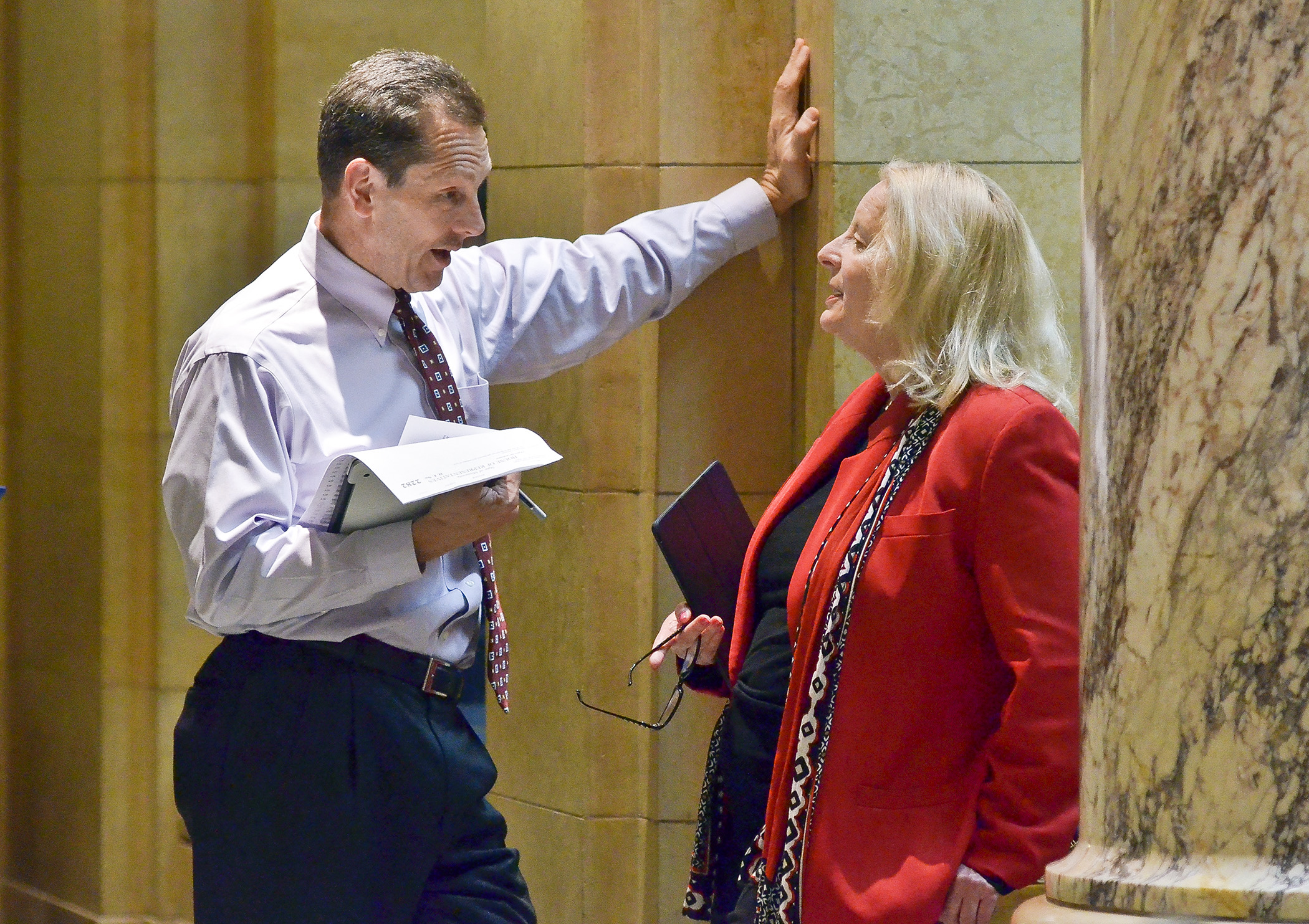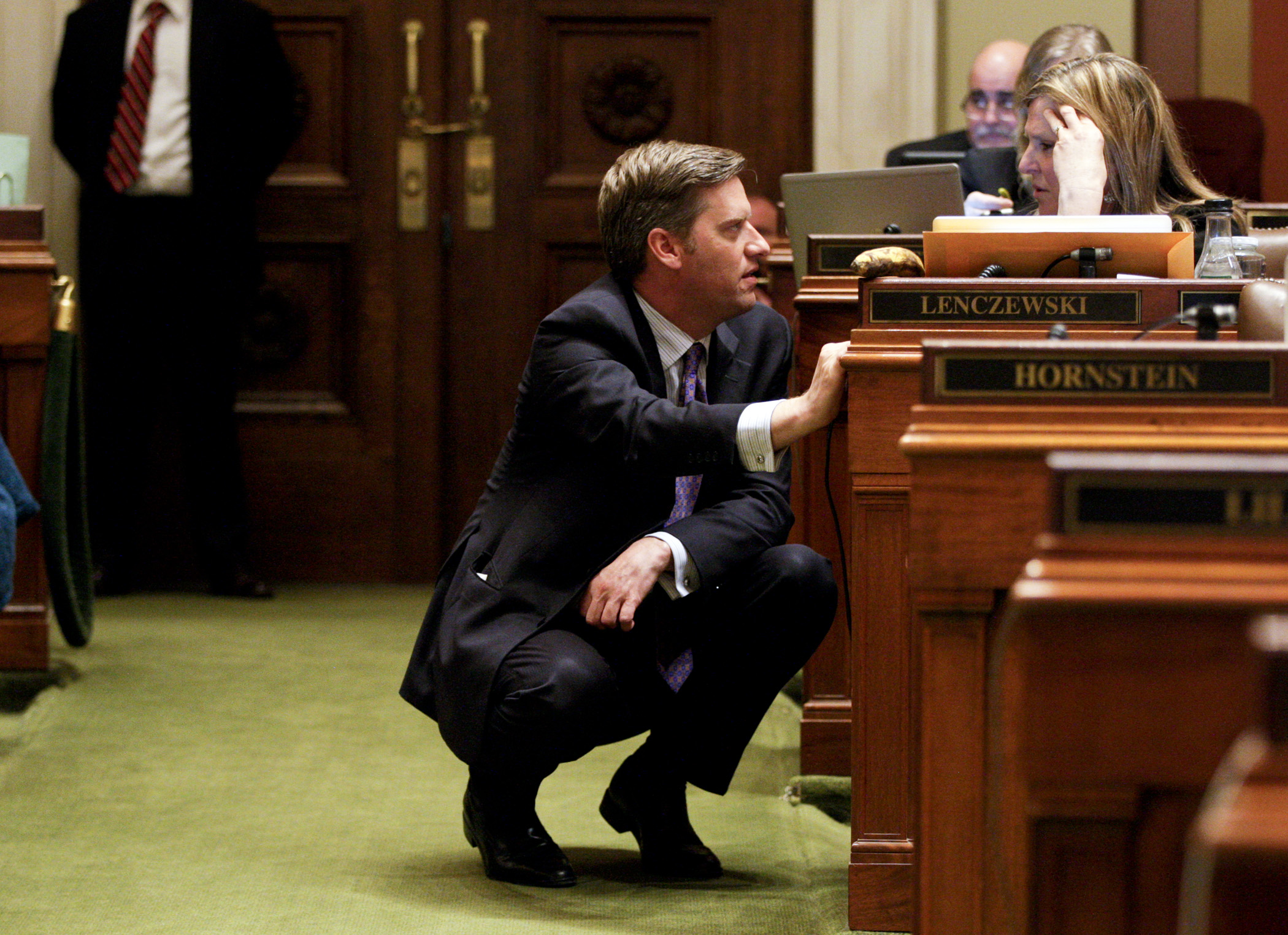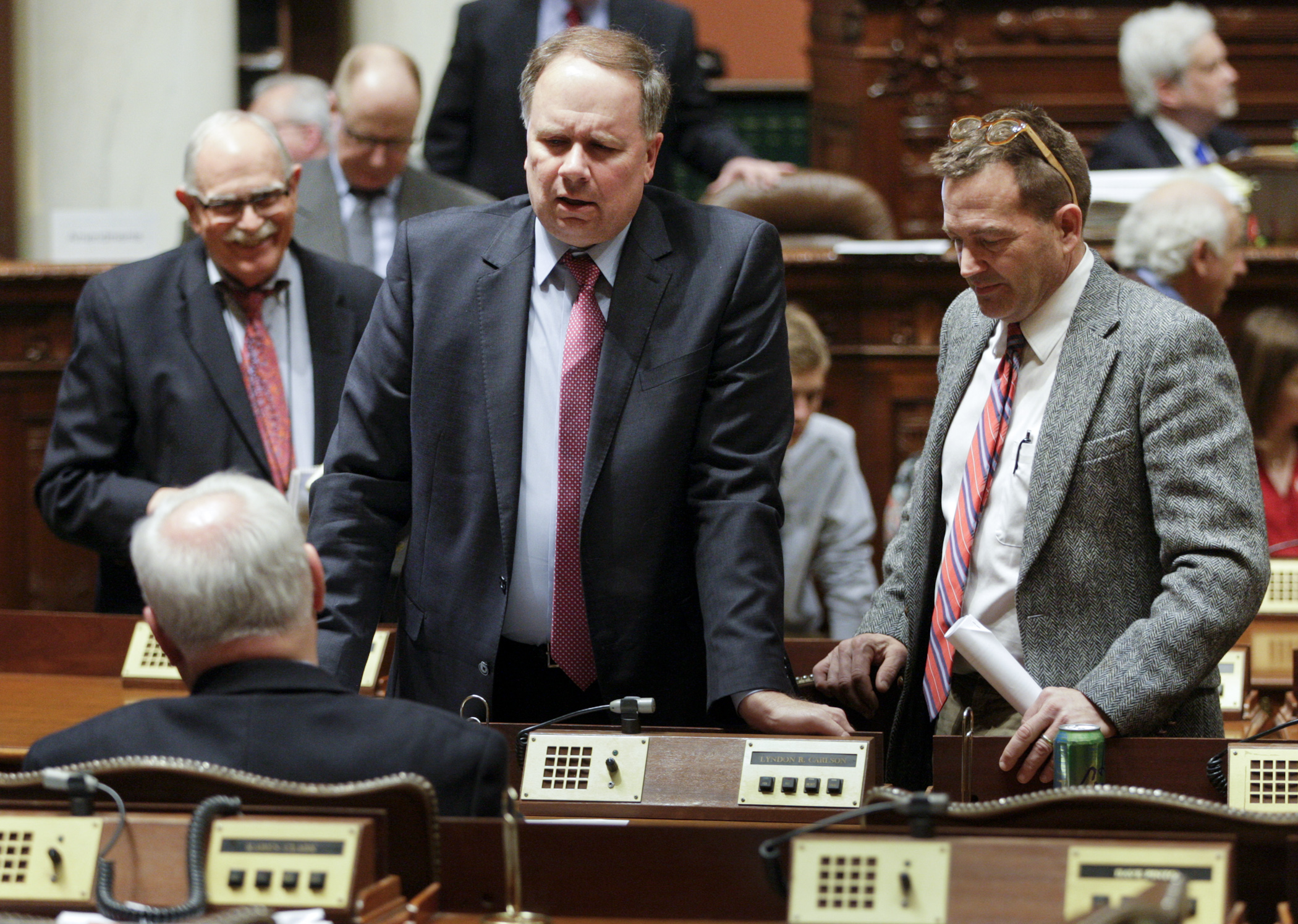Surplus: Unmet needs and high expectations lead to more problems

The chaos on the House Floor during the last minutes before Monday’s adjournment may have been inevitable, according to lawmakers who were here in 2001, the last time there was a state budget surplus.
After 10 years of budget deficits, a projected nearly $2 billion surplus led to hopes of tax breaks, more money for education and repairs to the state’s roads. But when the House and Senate adjourned, some of those priorities were left on the table in an all-but-too-common messy, chaotic end of session.
So what happened? Why, with a projected surplus, was it so difficult to come to a compromise on so many issues? Was it politics – Republican-controlled House versus a DFL Senate and governor? Or is the explanation as simple as the Notorious B.I.G.’s lyrics – “Mo Money, Mo Problems?”
Seasoned lawmakers will tell you it comes down to expectations.
Rep. Alice Hausman (DFL-St. Paul) was in her seventh term the last time the state was flush with cash. She said there are a lot of expectations coming into a session when there is a projected surplus, and that people don’t clearly understand that the number is just that – a number, not money that’s in the bank.
 House Speaker Kurt Daudt stops to confer with Rep. Ann Lenczewski in the early evening on May 18, the last day of the regular session. Photo by Paul Battaglia
House Speaker Kurt Daudt stops to confer with Rep. Ann Lenczewski in the early evening on May 18, the last day of the regular session. Photo by Paul Battaglia“When you begin with a public perception that it is already there, all the groups come out of the wood work – ‘give it back, you’ve collected too much taxes.’ Others say, ‘Thank goodness, now you can do more for education, health and human services,’” she said. But the February economic forecast is only a forecast. “And it was made before the Target layoffs, before the U.S. Steel and mining layoffs, and before the avian flu crisis.”
The growing partisanship also could be felt with so much money in play.
Rep. Mary Murphy (DFL-Hermantown) said that, for her, legislating during surplus years is hard. “Back in 2001, there wasn’t as much partisanship, in the sense that there were hopes that you could sometimes pass a bill without the lockstep approval or disapproval.” Serving her 20th term, Murphy said the number of years the state has faced a deficit has taken its toll. “Keep in mind that in that other time, there weren’t as many years in a row where we had to cut, and cut, and cut. This has been 10 years of unfilled expectations.”
There’s that word again: “expectations.” And it’s not only the legislators who have a hard time reigning them in.
 Rep. Jim Knoblach, center, confers with Reps. Lyndon Carlson Sr., left, and Leon Lillie after the March 16 House Floor session. House Photography file photo
Rep. Jim Knoblach, center, confers with Reps. Lyndon Carlson Sr., left, and Leon Lillie after the March 16 House Floor session. House Photography file photo“I suppose it’s true that its harder to legislate during a surplus because the groups line up like crazy and they don’t do that when there is a deficit,” said Sandy Neren, who has lobbied at the Legislature since 1978. She concurred with Murphy that the pent-up demand leads to more pressure.
In times of deficit, she said that legislators just nod their heads and acknowledge the proposal as a “good idea,” and walk away because of lack of money. But in a surplus, the groups come back more forcefully hoping that their good idea will get funded.
Rep. Jim Knoblach (R-St. Cloud) is the money man in the House, as chair of the powerful House Ways and Means Committee, which sets the spending targets. He, too, was here for the last surplus.
“I wouldn’t say it’s easier to legislate during a deficit, because you have a lot of difficult decisions to make and people get hurt," Knoblach said. "But, on the other hand, both parties realize that there isn’t money, and the only question is do you raise taxes or not. While, when there is a surplus, the Republicans will not want to spend it all, and the Democrats most probably will. So if anything, it’s harder with a surplus.”
And so Session 2015 closes out with over $1 billion left on the bottom line.
Related Articles
Search Session Daily
Advanced Search OptionsPriority Dailies
Ways and Means Committee OKs proposed $512 million supplemental budget on party-line vote
By Mike Cook Meeting more needs or fiscal irresponsibility is one way to sum up the differences among the two parties on a supplemental spending package a year after a $72 billion state budg...
Meeting more needs or fiscal irresponsibility is one way to sum up the differences among the two parties on a supplemental spending package a year after a $72 billion state budg...
Minnesota’s projected budget surplus balloons to $3.7 billion, but fiscal pressure still looms
By Rob Hubbard Just as Minnesota has experienced a warmer winter than usual, so has the state’s budget outlook warmed over the past few months.
On Thursday, Minnesota Management and Budget...
Just as Minnesota has experienced a warmer winter than usual, so has the state’s budget outlook warmed over the past few months.
On Thursday, Minnesota Management and Budget...